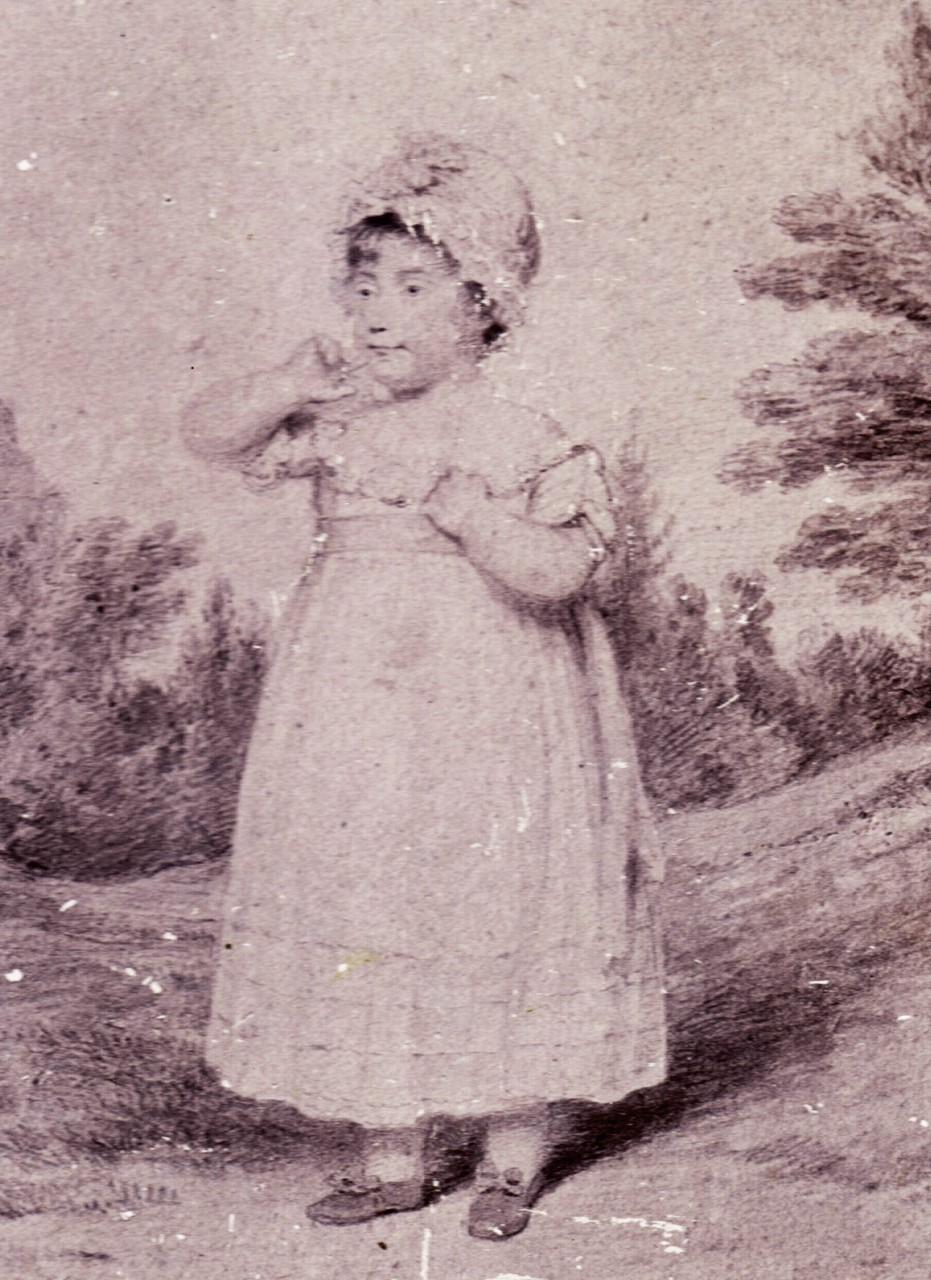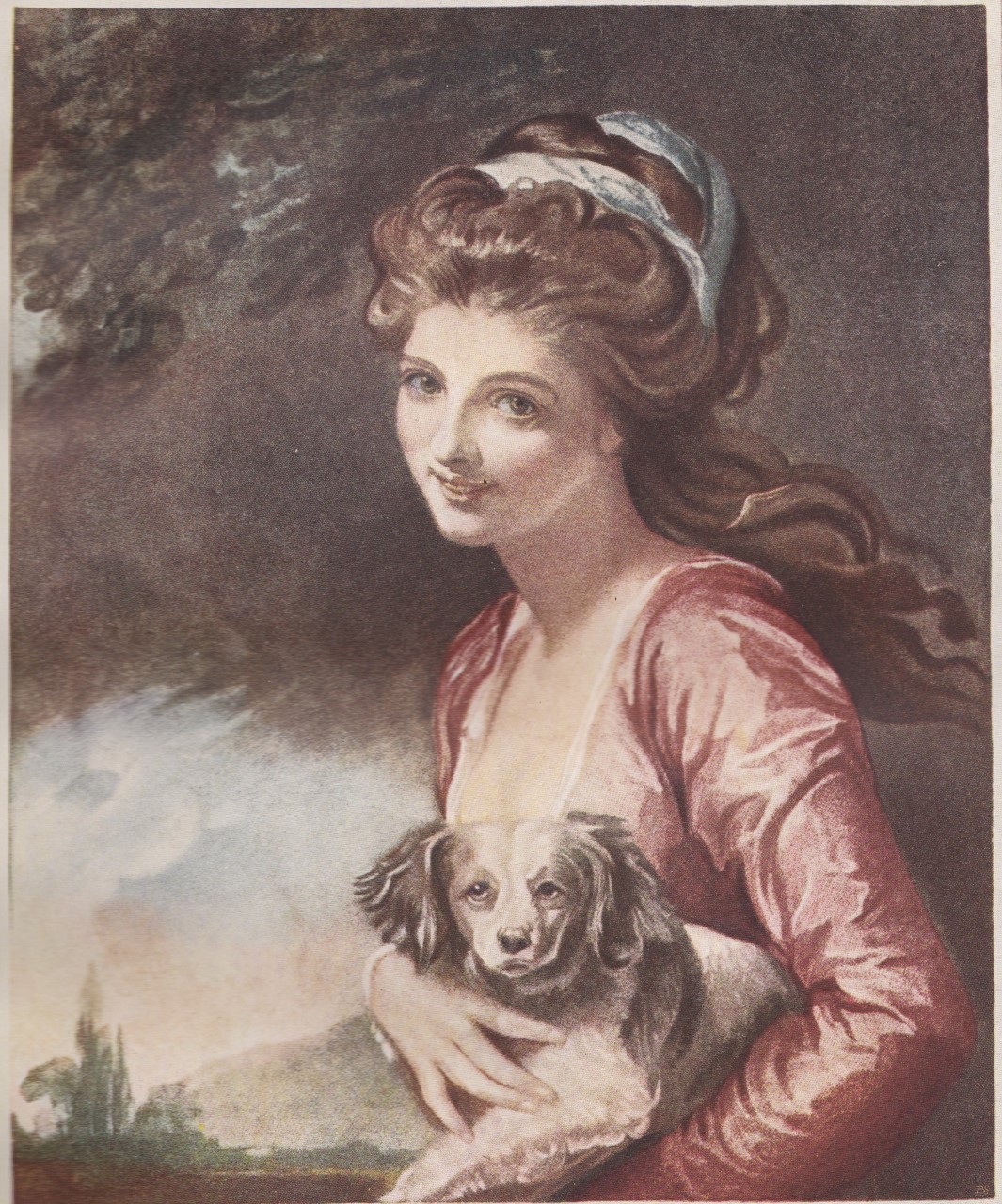Guest post by the great grand-daughter of Lord Nelson and Emma Hamilton
Lily Style is a direct descendant of Emma Hamilton and Lord Nelson through their daughter Horatia. She founded the Emma Hamilton Society in 2016, writes regularly for Nelson-related publications, and authored ‘Horatia’s Secret’, the first historical novel to tell the life story of Horatia.. http://emmahamiltonsociety.co.uk/
Emma Hamilton is remembered for innovative fashion and art and most famously as Nelson’s great love, but what was she like as a mother? The Victorian misogynist, anti-Emma stance painted her as bad through and through, her maternal role included. This perspective is exemplified by Horatia’s biographer Winifred Gérin, who viewed Emma as a shadowy, emotionally distant mother possessed of “innate vulgarity” and violence of nature[i], self-servingly wielding her custody of Nelson’s child as an exploitable asset.[ii]
Having moved from Hawarden in Flintshire, north Wales to London at the age of twelve, young Amy Lyon (as she was then named) took what work she could find culminating in her being hired at the age of fifteen (a child according to the modern definition) as a live-in inamorata at Uppark, Sussex by wealthy playboy Sir Harry Fetherstonhaugh. Sir Harry, however, threw Emma out when she became pregnant.
Emma has been criticised for her sluttish early years, but is it really right to blame vulnerable, impoverished children for actions taken in a society geared up to exploit them? Unmarried and penniless, Emma wrote in desperation to Sir Harry’s friend Charles Greville begging him to save her. He agreed to take both her and her mother in on the conditions that her child when born was sent to live elsewhere; that she learn demure, ladylike deportment; and that she change her name to Emma Hart.
Her baby, “Little Emma” was born in early 1782. Romney’s first portrait of Emma, as “Nature”, shows her seated with a spaniel on her lap to hide her still bulging belly.[i]
Little Emma was sent to live with her grandmother in Hawarden. Emma did not want to set her infant daughter aside (even Emma-hostile Gérin admits that at this stage Emma “had strong maternal feelings”[ii]). She wrote to Greville from a holiday with Little Emma in 1784:
“Oh Greville, you don’t know how I love her, endead I do. When she comes and looks at my face & calls me “mother”, endead I then truly am a mother, for she has a wright to my protection & she shall have it as long as I can & will do all in my power to prevent her falling into the errors her poor once miserable mother fell into.”[iii]
Their holiday was at the resort of Parkgate on the Cheshire side of the Dee, just a few miles from Emma’s place of birth at Ness and twelve miles from her childhood home in Flintshire. The location suggests Emma, accompanied by her mother and young daughter, wished to meet up with Emma’s paternal Lyon family. Although Emma’s father had died when she was just a few months old, her mother didn’t remove her far on taking her to Hawarden from Ness, where Emma’s paternal uncle Thomas Lyon took over her father’s post of mine’s blacksmith. A hint of their maintained relations with Ness comes through mention in one of Emma’s Parkgate letters that Mrs Ladmore might have accommodated them had she not moved to Chester. Mrs Bathsheba Ladmore was the widow of a shipwright smith who had lived along the coast toward Ness. It seems highly likely that she and her husband would have known Thomas Lyon as both neighbour and fellow smith.[iv]
Emma’s more famous daughter, Nelson’s child Horatia, was born in the early part of 1801. Both parents were anxious to protect her from the massive social stigma of illegitimacy and went to elaborate lengths to pretend they were caring for the infant on behalf of their unfortunate (and fictitious) friends the Thompsons. Emma had done her best to conceal her pregnancy and they pretended Horatia had been born in the latter part of the previous year while they’d been abroad (thus precluding Emma from being the mother). Horatia was given to the care of a nurse, Mrs Gibson, but many notes survive showing Emma’s arrangements for visits and her active interest in Horatia’s welfare.[v]

There is evidence that Horatia was one of twins and members of the anti-Emma brigade have pounced on Emma’s sponsoring an infant named Emma Hamilton in a foundlings hospital as proof that she’d given one twin up. Why would she do this? According to Emma’s disparagers, it was because she lacked motherly love and found it easier to hide one baby than two. Gérin opines:
“Nelson had evidently been told that Lady Hamilton had brought twins into the world, but though there would be obvious difficulties in hiding two illegitimate children it is uncharacteristic of him to have instructed her to abandon one of them. It is more likely he was told it was dead, while, in fact, it was committed to the Foundlings” [vi]
This makes little sense given consideration, especially as a nurse cared for Horatia. As we shall see, Emma was far more maternally loyal than disparagers such as Gérin have given her credit for, and the more likely explanation is that Emma had merely, as was then the fashion, given her name to an orphan she had sponsored.
Emma clearly loved the company of girls. Frederick Rehberg sketched her in Naples in 1794 performing one of her Attitudes with a young girl, and there is plentiful record of the enthusiasm she later showed Nelson’s nieces, with Charlotte Nelson, the daughter of Nelson’s brother William, having been a favourite. She wrote on 3rd January 1803 of a children’s New Year ball at Merton:
“We have had a delightfull Ball. Charlotte outdid herself. Like an angel she was that night.”[i]
According to Gérin, Emma after “her removal to Italy under the aegis of Sir William Hamilton [had] never sought to see [her first] child again.”[ii] However, examination of Nelson’s correspondence to Emma during the establishment of Merton Place (dubbed by them “the farm”) suggests it was in fact Sir William who wanted Little Emma (now known as Emma Hartley) kept away and that Nelson had actively supported Emma’s struggles to bring her daughter to stay. For example, Nelson, tactfully calling Emma Hartley her “Relation”, wrote to Emma in September 1801:
“… if your Relation cannot stay in your house in Town, surely Sir William can have no objection to your taking her to the farm… The pride of the Hamiltons surely cannot be hurt by sitting down with any of your Relations. You have surely as much right for your Relations to come into the house as his could have. It has vexed [me] as I know it must give you great pain.”[iii]
Emma’s now twenty-year-old daughter, at this time named Emma Hartley, is recorded at Merton during special occasions, such as Christmas 1802[iv], and was even witness at Nelson’s niece Catherine Bolton’s 18th May 1803 wedding at Emma’s Paddington house, along with Charlotte Nelson, Emma’s protégé.[v]
Emma bore a third daughter, another Emma, after Sir William’s death in 1803, but tragically the child was sickly and died within a couple of months.[vi]
Emma cycled into extreme poverty and despair after Nelson’s death, with her mind becoming, in Horatia’s words, “so irritable by drinking”[vii]. Her first daughter, now named Emma Carew, famously wrote to her in November 1810:
“Had you felt yourself at liberty [to confirm she was her mother], I might have become reconciled to my former situation and been relieved from the painful employment I now pursue. It was necessary as I then stood, for I had nothing to support me but the affection I bore you; on the other hand doubts and fears by turns oppressed me, and I determined to rely on my own efforts rather than submit to abject dependence, without a permanent name or acknowledged parents… should [you] really wish to see me, I may be believed in saying that such a meeting would be one of the happiest moments of my life, but for the reflection that it may also be my last, as I leave England in a few days, and may, perhaps, never return to it again…”[viii]
Emma, however, despite her drastically lowered circumstances, continued to do her best for nine-year-old Horatia as a mother. Horatia later commented:
“It is but justice on my part to say through all her difficulties she invariably till the last few months, expended on my education etc, the whole of the interest of the sum left me by Lord Nelson and which was left entirely in her control.” [ix]
So was Emma the anti-mother Gérin and her Emma-hating ilk have claimed? I say no, she was in fact a diligent, loving and loyal mother tragically beset by powers that allowed no space for females without means to come of age in safety, or to then nurture their own children. To me, the effort Emma made as a mother in the face of these odds was heroic, and I believe she should be appreciated in this light.
- 1 Gérin Winifred, 1981. Horatia Nelson. Oxford: Oxford University Press. P. 8 2 Ibid. P. 143 3 Williams, K., 2006. England’s mistress: the infamous life of Emma Hamilton. London: Hutchinson. Pp. 89, 90 4 Ibid. P. 26 5 Fraser, F., 1986. Beloved Emma: the life of Emma, Lady Hamilton. London: Weidenfield and Nicolson. P. 47 6 Dr. Geoff Wright, Emma Hamilton Society Historian, by email 31st August 2018 7 Gérin Winifred, 1981. Horatia Nelson. Oxford: Oxford University Press. P. 4 8 Ibid” P. 19 9 Ibid. P. 57 10 Ibid. P. 26 11 Livesey. J., 2014. Finding the Lost Daughter of Lady Hamilton. [online] Global Maritime History. Available at: <https://globalmaritimehistory.com/finding-lost-daughter-lady-hamilton/> [Accessed 5 Sep. 2018]. 12 Ibid. 13 London Metropolitan Archives; London, England; Reference Number: DL/T/089/002 14 Livesey. J., 2014. Finding the Lost Daughter of Lady Hamilton. [online] Global Maritime History. Available at: <https://globalmaritimehistory.com/finding-lost-daughter-lady-hamilton/> [Accessed 5 Sep. 2018]. 15 Gérin Winifred, 1981. Horatia Nelson. Oxford: Oxford University Press. P. 208 16 Morrison MS, Volume II, Letter 979 (quoted in Livesey. J., 2014. Finding the Lost Daughter of Lady Hamilton. [online] Global Maritime History. Available at: <https://globalmaritimehistory.com/finding-lost-daughter-lady-hamilton/> [Accessed 7 Sep. 2018]). 17 Gérin Winifred, 1981. Horatia Nelson. Oxford: Oxford University Press. P. 208 Illustrations Emma Hart as Nature after Romney from The Life Of Lady Hamilton, Baily, (J.T.Herbert), Published by London, London (1905) Horatia as a young girl, print from Style family collection

